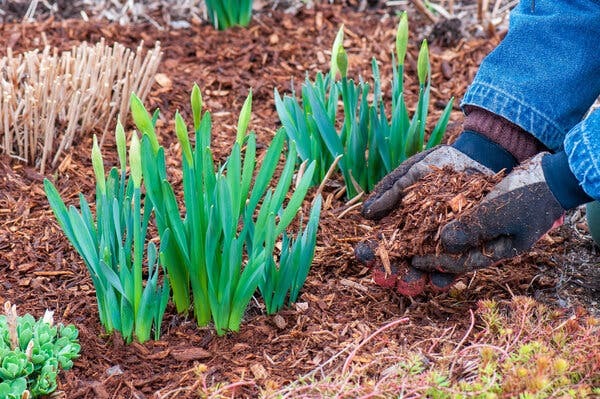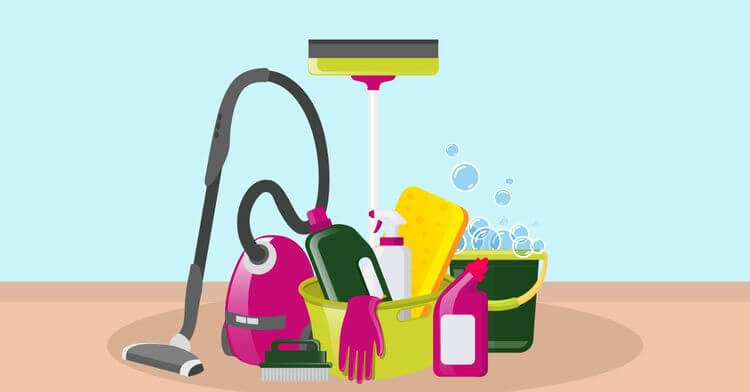Best Tips for Mulching: Save Time and Improve Your Garden

Mulching’s a clever way to save time and boost your garden’s health. When you use the right tricks, gardening gets way easier and more efficient.
Mulch helps keep the soil moist, stops weeds from taking over, and gives the soil extra nutrients. All these perks make it a must-do for any garden that’s looking to thrive.
Explain the Different Types of Mulch Available
Picking the right mulch can make a big difference in your garden. Knowing the types helps you choose what’s best for your garden. There are two main types: organic and inorganic, each with its own good and bad points.
Organic Options
Organic mulch, like wood chips, straw, and shredded bark, boosts soil quality. As they break down, they add nutrients to the soil and attract helpful creatures like earthworms.
This makes them great for veggie patches and flower beds. They do break down fast, so you’ll need to replace them often, but they really help plants grow well.
Inorganic Options
On the flip side, inorganic mulches like rubber, gravel, or black plastic last longer. They’re low-maintenance and perfect for paths or busy areas. While they don’t add nutrients, they do a great job of stopping weeds and keeping the soil moist.
Rubber mulch is especially good where there’s a lot of foot traffic because it stays neat and holds up over time. In the end, choosing between organic and inorganic mulch comes down to what your garden needs and how much time you’ve got for upkeep.
Best Times to Apply Mulch: Early Spring and Fall
Applying mulch at just the right time can really boost your garden’s health and make looking after it so much easier. The best times to mulch are early spring and fall, each offering special perks to keep your garden thriving all year.
Early Spring
In early spring, think of mulching as setting the stage and adding a bit of armour. As it gets warmer, mulch helps keep moisture in the soil and keeps weeds away, giving your plants a nice nutrient lift.
This is super helpful for perennials and bulbs that do best when the soil stays cool and wet during their growth. Picture it like giving your plants a sturdy shield, protecting them from dehydration and those pesky weeds eager to grow.
A layer of mulch now means less weeding and watering later, letting you enjoy more of your garden’s beauty.
Fall
Mulching in the fall is like giving your garden a cosy jumper against the upcoming cold. It keeps the soil warm and shields plant roots from frost. Roses and shrubs, in particular, love the extra warmth. It’s like tucking your plants in for a snug winter.
Imagine your garden ready for a long, chilly night, with mulch acting as a gentle blanket that fends off the cold and keeps everything snug and secure. This warm layer helps your soil get a head start when spring arrives again, making it all the more rewarding.
Monitoring Weather Conditions
To get the most out of mulching, keep an eye on the weather before you start. Make sure the soil’s dry and chilly, especially in the fall, to help the mulch keep the soil toasty. It’s like wrapping your garden in a comfy blanket to keep it snug during the colder months.
Waiting for just the right moment ensures the mulch does its job best, and your garden stays vibrant and healthy.
Get your gloves on and start mulching to enjoy a flourishing garden that stays happy through every season.
Preparing the Garden Bed Before Mulching
Before you lay down mulch in your garden, it’s really important to get things ready. Start by cleaning up any mess, like leaves or branches, so you’ve got a nice flat surface. This not only makes your garden look better but also gets the soil ready for the next steps.
After it’s all clear, get rid of those pesky weeds. They steal water and food from your plants, so grabbing a small spade or hoe to dig them out is a good idea.
Once the wedding’s done, give the soil a bit of water. It helps the mulch keep the ground moist, but don’t go overboard, or you might end up with soggy soil and pests. Prepping your garden bed right means the mulch can do its job better, keeping your plants happy and healthy.
Ideal Thickness of Mulch Layers
Getting the right thickness of mulch in your garden is super important. You wanna aim for around 2-4 inches. That’s the sweet spot. With this thickness, weeds don’t stand a chance, and water gets through just fine.
If it’s too thin, like less than 2 inches, weeds will pop up and steal nutrients from your plants. Too thick, over 4 inches, and water can’t reach the soil properly, leaving your plants thirsty. Imagine trying to water a plant through a thick carpet—it just won’t work.
So, grab a rake and spread it out evenly. Whether you’re using hay, bark, or even rubber, keeping the right thickness helps your outdoor space thrive.
Replenishing Mulch Regularly
Keeping mulch in good shape is key to a healthy garden. Mulches like bark and straw break down over time, which is great for the soil but means they don’t work as well.
So, it’s a good idea to top up your mulch twice a year, in the spring and autumn. This way, it keeps on protecting your plants and stopping weeds from popping up. It’s smart to check how deep your mulch is every now and then.
If it gets down to about an inch, it’s time to add more. A quick check every few months can help you dodge bigger garden problems later. When you add new mulch, spread it out evenly with a rake to stop any clumps, as those can mess with water soaking into the soil.
Keeping your mulch fresh helps keep soil moisture and temperature just right and keeps weeds away, making garden care a breeze. This little routine helps your garden thrive with less hassle.
Sourcing Mulch Efficiently and Cost-Effectively
Looking to save money and go green with your garden? Check out these cheap mulch ideas!
Local Suppliers
Try visiting local nurseries and garden centres. They often sell mulch in bulk, so you get more bang for your buck. Plus, they usually have some pretty handy gardening tips to share.
If you’re already working with a professional gardening service, they might even source and deliver mulch for you, saving you time and effort.
Community Gardens
Drop by your local community garden. They might have extra mulch for a low price or even for free. It’s also a fab place to swap gardening tips and ideas.
DIY Options
Why not make your own mulch? Use leaves, grass clippings, and kitchen scraps to whip up some rich compost. Got a wood chipper? Turn branches into mulch and save cash.
By getting mulch locally or making your own, you’ll save money and cut down on pollution and waste. You could start a compost pile or ask a local tree surgeon for free wood chips. It’s great for your wallet and the planet!
Conclusion
Using mulch in your garden can really make a difference. It helps keep the soil wet and stops weeds from popping up, which is great for your plants and means less work for you.
Picking the right mulch and using it smartly can make your garden grow better and with less fuss. Give these tips a try for a garden that’s both lively and easy to manage!




